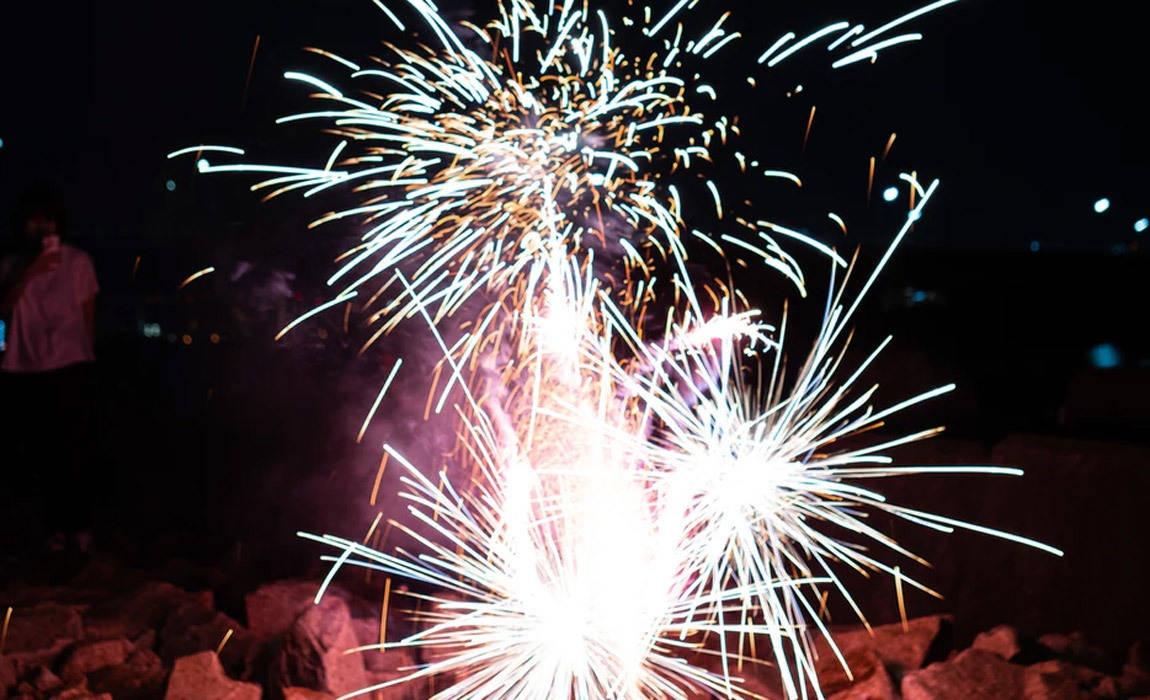Nothing beats the satisfaction of lighting up your own backyard with a fireworks display that makes the neighbors stop whatever they're doing and pay attention. You're not just putting on a show - you're creating memories that'll have people talking about your place every Fourth of July.
The best part? You can get the crew together a few hours before sunset to help build fireworks racks and turn your staging area into mission control. Here's how to pull off a backyard spectacular that beats anything you'll see at the local park.
...
- Planning a perfect at-home fireworks show requires careful budgeting ($200-500), proper safety protocols, knowledge of local laws, and a mix of different firework styles including aerial shells, ground effects, and family-friendly novelties.
- Safety is paramount when handling fireworks, requiring protective equipment, proper distance from structures, and following strict guidelines from the National Safety Council.
- Local laws and permits vary significantly by state and county, making it essential to research and comply with your area's specific regulations before purchasing or using fireworks.
- Creating an engaging show requires thoughtful planning of the layout, timing, and progression, building tension throughout before reaching an impressive finale.
- Purchasing fireworks online is convenient and legal in most states, but it's crucial to work with established retailers who prioritize safety and compliance with local regulations.
Getting the legal stuff squared away first saves you from having fire marshals crash your party or worse - hefty fines that'll make your wallet lighter than your fireworks budget.
Know What You Can Actually Buy
This guide assumes you're using consumer-grade 1.4 G ("Class C") fireworks - the stuff regular folks can buy without special licenses. Anything labeled 1.3 G requires a licensed display operator and formal permits, which means you're looking at professional territory with professional prices and professional headaches.
Check State Laws First, Then Go Local
Here's the reality check: Some states, like Massachusetts and New Jersey, ban all aerial consumer fireworks completely. Others restrict usage to specific holidays or require you to be a certain distance from structures. Start with your state regulations, then drill down to county and city rules. Your local fire department can usually give you the straight answer about what flies in your area. American Pyro maintains a list of all state fireworks laws.
Where to Buy Your Arsenal
Skip the roadside stands selling questionable merchandise from the back of pickup trucks. Hit up established retailers where staff actually understand different effects and can help you build a show instead of just moving inventory. These folks have seen enough backyard disasters to steer you toward combinations that actually work together. Online ordering works fine for basics, but nothing beats talking to someone who knows which cakes fire fast versus slow, or which shells give you the biggest bang for your buck.
Storage and Transport That Won't Get You Arrested
Keep fireworks in their original boxes and store them somewhere cool and dry - not your garage in Arizona summer or your basement that floods every spring. The CPSC says never store them in vehicles overnight or carry them in your pockets. Read every manufacturer label because some items have specific storage requirements that matter more than you think.

Choose Your Show by Budget
Your wallet determines whether you're putting on a cute backyard display or something that makes the local fire department wonder if they should swing by to watch.
Family Backyard Fun ($50-100)
- Grab 6-8 ground fountains at $5-8 each for steady ground-level action that keeps kids entertained
- Add a variety pack of aerial shells for $25-35 to get those satisfying overhead bursts
- Stock up on sparklers at $10-15 because everyone wants to participate in the finale
- Consider reloadable shell kits for serious aerial value without breaking the bank
This budget gives you 10-15 minutes of solid entertainment that works perfectly for intimate gatherings where you want everyone engaged.
Neighborhood Block Party ($200-400)
- Invest in 4-6 multi-shot cakes at $30-60 each for those impressive rapid-fire sequences
- Add roman candle 3-packs around $18 each for continuous colorful ball effects
- Include larger aerial shells at $10-15 each for classic overhead spectacles
- Purchase ground fountain sets at $50-75 to maintain atmospheric effects between big moments
This level delivers 15-20 minutes of varied entertainment with enough impressive aerials to make people pull out their phones.
Unforgettable Spectacle ($500+)
- Go big with 500-gram multi-shot cakes at $80-110 each for professional-grade rapid sequences
- Stock premium 60-gram canister shells at $10-15 each, buying boxes of 24 for around $240-270
- Add synchronized fountain sets at $100-200 for coordinated ground displays that look choreographed
- Include specialty waterfall effects at $40-80 for unique visual moments people haven't seen before
This budget supports serious show time, though remember that duration depends on your firing tempo - continuous action burns through any budget faster than measured pacing.
Common Fireworks Types
Understanding what each type actually does helps you avoid the rookie mistake of buying all aerial shells or loading up on fountains that all look the same.
Ground Effects
Fountains, wheels, and ground spinners create the atmosphere while giving you breathing room between aerial assaults. They're perfect for building anticipation and keeping younger viewers engaged without sending everything skyward at once. Quality pieces run $5-25 depending on how long they burn and how many effects they cycle through. The good ones transition between colors and effects rather than just shooting the same sparks for two minutes.
Aerial Shells
These are your bread and butter for that classic fireworks experience. Single-shot shells launch high before exploding into patterns like peonies, chrysanthemums, or crossettes. Consumer 60-gram canister shells typically cost $10-$ 15 each when purchased in boxes, offering impressive height and spread without the premium pricing. Save the expensive specialty shells for key moments rather than burning through them early.
Multi-Shot Cakes
The workhorses of any good show, these compact units fire multiple shots in rapid sequence from a single ignition. You light once and get anywhere from 9 shots to 500-gram displays that keep firing for over a minute. Basic 9-shot cakes start around $25, while elaborate 500-gram displays hit $80-110. They're worth every penny because they eliminate the need for constant relighting while delivering sustained action.
Roman Candles
Think of these as your connective tissue between bigger displays. Quality roman candles fire colorful balls in succession, perfect for maintaining momentum while you prep the next round of aerials. A typical 3-pack runs about $18, giving you reliable continuous effects that bridge the gaps in your timeline.
Setup and Execution
This is where planning meets reality, and proper setup determines whether your show flows like a professional display or turns into a frantic scramble with embarrassing dead periods.
Building Your Launch Platform
Construct a sturdy plywood base (8 feet by 2 feet) with two-by-four supports underneath for rock-solid stability. Here's the critical part: secure cakes to your "show board" with exterior screws driven beside the plastic base, never through it - puncturing the base invalidates safety certifications and can damage internal tubes. Back everything up with cable ties or heavy-duty tape. For mortar tubes, use HDPE or fiberglass tubes screwed to 2x4 frames; never PVC, as it can shatter.
Safety Distances That Actually Matter
Follow whatever distance rules your local fire marshal specifies, but here's the widely accepted standard now written into state laws: keep spectators at least 150 feet from any aerial launch point. For professional calculations, NFPA 1123 calls for 70 feet of separation per inch of shell diameter. Maintain a 300-foot clear fallout corridor downrange for debris, and make sure no overhead wires or tree limbs interfere with either zone.
Timing Your Show Like a Pro
Start with ground effects and smaller aerials to build anticipation - nobody wants to peak in the first five minutes. Layer different types for continuous action, keeping your biggest shells and most impressive cakes for the grand finale when everyone's attention is locked in. Weather matters more than you think: light rain just means wrapping fireworks in foil, but wind above a strong breeze means postponing until conditions improve.
The Fuse Connection Game
Connecting fuses creates seamless transitions, but bridging factory visco fuses creates instant fire paths that move faster than you expect. Keep your hands clear after lighting and consider your escape route before you start the sequence.
Creating Your Perfect Backyard Fireworks Spectacular
Planning your own fireworks display combines careful preparation with creative vision to deliver entertainment that brings people together for all the right reasons. Focus on understanding local regulations first, selecting appropriate fireworks for your actual budget and space constraints, and prioritizing safety through proper setup and realistic distance management. Most fireworks retailers genuinely want to help customers plan successful shows, so visit with a clear idea of your goals, timeline, and budget - let their experience guide your final selections, and you'll avoid the most common mistakes that turn great ideas into a mediocre reality.
